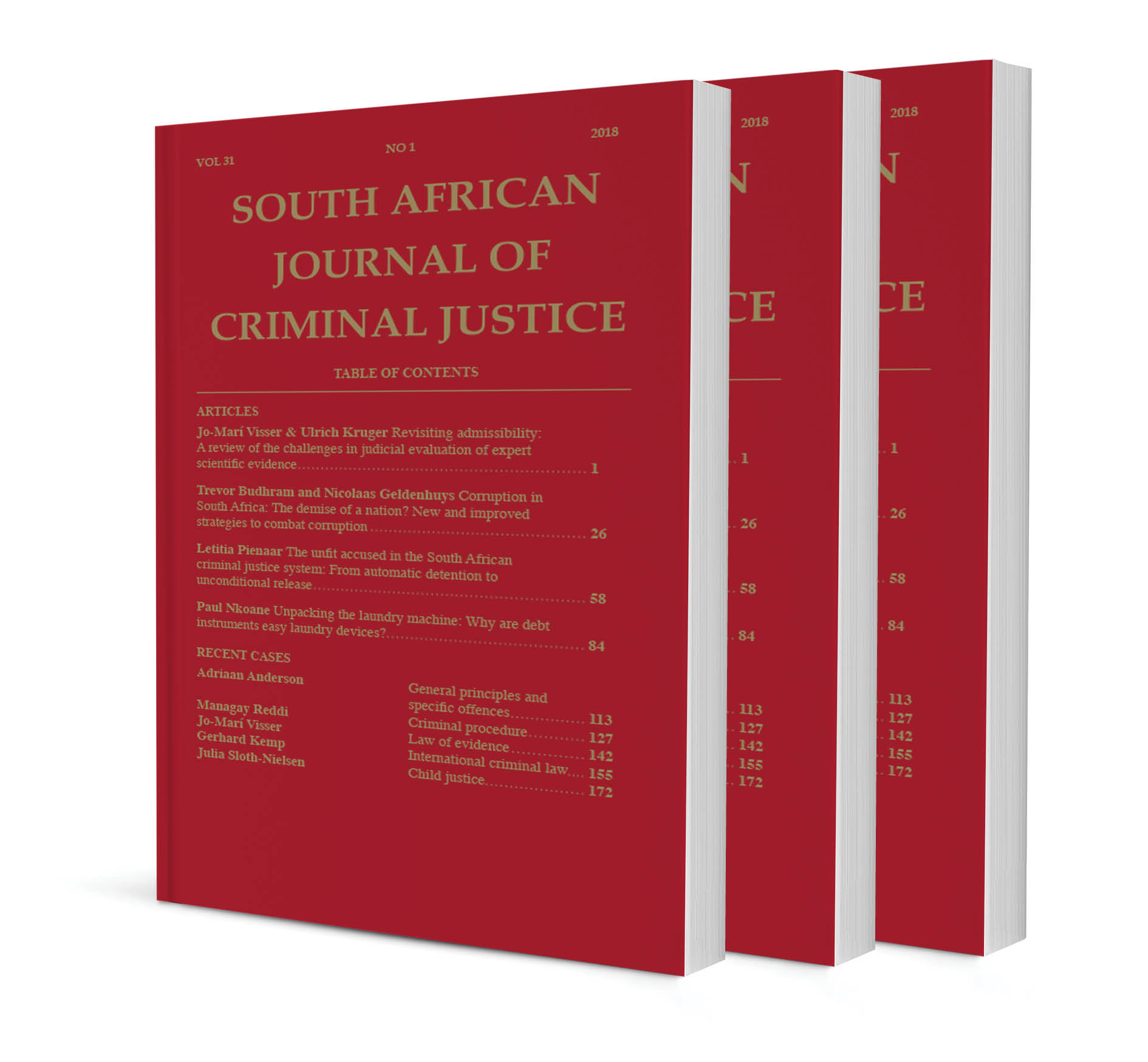
Fingerprint evidence under scrutiny: Issues raised by six international forensic reports (part 2)
Authors Lirieka Meintjes Van Der Walt and Mercy Chiwara
ISSN: 1996-2118
Affiliations: BJuris LLB (UPE); LLM (Rhodes); LLD (Rijksunversiteit Leiden), Adjunct Professor of Law, Leader of the Law, Science and Justice Research Niche Area, University of Fort Hare; LLB; LLM (University of Fort Hare).
Source: South African Journal of Criminal Justice, Volume 33 Issue 1, p. 168 – 191
Abstract
Part 1 of this article, separately published in 2019 (32(2)) SACJ 155, scrutinises the Mayfield Report and the NAS Report with regard to fingerprint evidence. This section, Part 2 of the article, specifically interrogates the 2011 Scottish Fingerprint Inquiry Report (SFI Report) (consisting of 750 pages); the 2012 National Institute of Science and Technology Report (NIST Report) (consisting of 249 pages), the 2016 Forensic Science in Criminal Courts: Ensuring Scientific Validity of Feature-Comparison Methods Report by the President’s Council of Advisors on Science and Technology (PCAST Report) (consisting of 174 pages) and the 2017 Forensic Science Assessments: A Quality and Gap Analysis: Latent Fingerprint Examination of the American Association for the Advancement of Science (AAAS Report) (consisting of 166 pages). In this article, the summaries of these extensive and incisive reports and the recommendations contained therein, clearly reflect a startling similarity in the findings of the different reports. It is pointed out that all the reports register pertinent challenges faced by fingerprint evidence with regard to validity and reliability. The article concludes by asserting that South Africa might well heed the challenges and shortcomings registered by these reports when deciding on the relative weight that should be attached to fingerprint evidence.